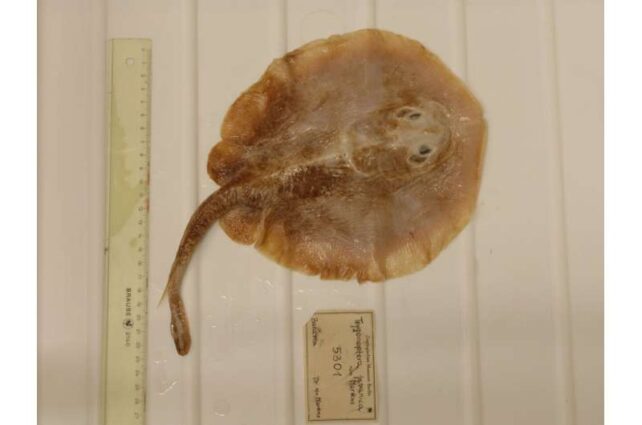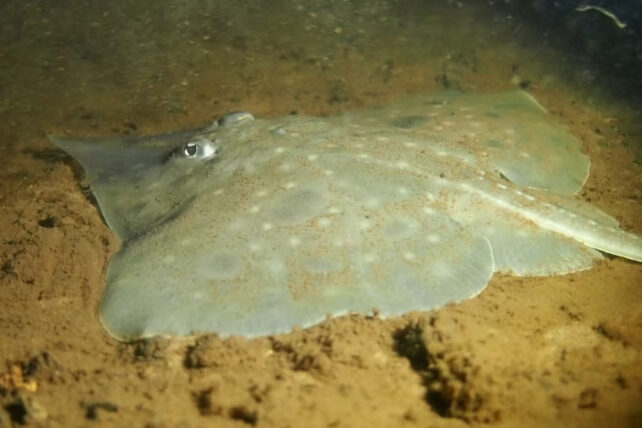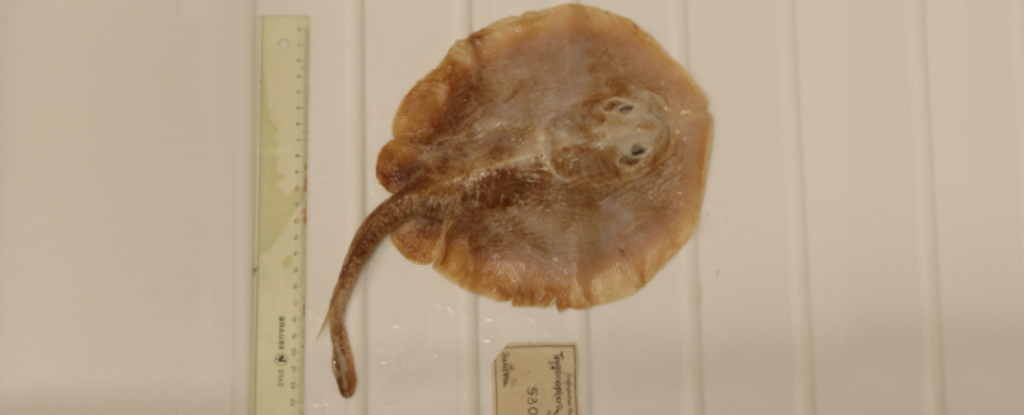Products You May Like
Java Stingarees are the first marine fish to be declared extinct as a result of human activity.
This troubling news was released with the International Union for Conservation of Nature’s (IUCN) latest update of its Red List of Threatened Species last week, along with reports of escalating climate impacts on freshwater fishes presented at COP28.
A shocking quarter of all known freshwater fish species are currently at risk of extinction, with 20 percent impacted directly by climate change.
“Freshwater fishes make up more than half of the world’s known fish species, an incomprehensible diversity given that freshwater ecosystems comprise only 1 percent of aquatic habitat,” says Kathy Hughes, Co-Chair of the IUCN SSC Freshwater Fish Specialist Group.
“These diverse species are integral to the ecosystem, and vital to its resilience. This is essential to the billions of people who rely upon freshwater ecosystems, and the millions of people who rely on their fisheries.”
This decimation of aquatic species is tracking just as scientists predicted.
From the banks of Australia’s outback rivers, to the shores of US lakes and the beaches of Thailand, mass fish die offs are on the increase around the globe. While these do happen naturally in the wake of extreme weather events, we’ve taken too much of their water, added too many pollutants, and dialed up those weather extremes.
The numbers of individual animals impacted in just 2023 are hard to fathom.
Hundreds of fish found dead at Quintana Beach County Park https://t.co/3ymYBbpcXl pic.twitter.com/F6iWmE93Mh
— FOX26Houston (@FOX26Houston) June 10, 2023
Vulnerable species include the highly prized Atlantic Salmon.
“This is yet another wake-up call to our decision makers that large-scale nature restoration cannot wait any longer,” urges Claire Baffert, Senior Water Policy Officer at WWF’s European Policy Office.
“To keep this extinction crisis at bay, EU institutions must adopt the long-awaited Nature Restoration Law which includes a target to restore 25,000 kilometers of free-flowing rivers – vital for salmon and other migratory fish.”
Back out at sea, an assessment on the Java Stingaree (Urolophus javanicus) was performed by Charles Darwin University conservation biologist Julia Constance.

This unique, dinner-plate-sized ray was only known from one specimen collected from a Jakarta fish market in 1862 (pictured). Despite extensive monitoring of markets and survey efforts not a hint of this species has been found since.
“Intensive and generally unregulated fishing is likely the major threat resulting in the depletion of the Java Stingaree population, with coastal fish catches in the Java Sea already declining by the 1870s,” Constance notes.
“The northern coast of Java, particularly Jakarta Bay where the species was known to occur, is also heavily industrialized, with extensive, long-term habitat loss and degradation. These impacts were severe enough to unfortunately cause the extinction of this species.”

The Red List contains at least 120 critically endangered marine fishes. Like the stingaree, many of them also suffer directly from pollution, including Tasmania’s Maugean skate (Zearaja maugeana). Runoff from industrial-scale farming (ironically, of Atlantic salmon) has helped push this million-year-old living fossil to fewer than 1,000 individuals.
Industries benefiting from these practices are accused of not being transparent about them. Countless situations like this around the world are exactly what has led to such precarious prospects for too many fish species and so much of Earth’s life.
The Red List now records over 44,000 species currently on the edge of existence. This is almost 30 percent of the species they’ve assessed.
If we don’t start prioritizing the environment we all share, many more extinctions will follow.
